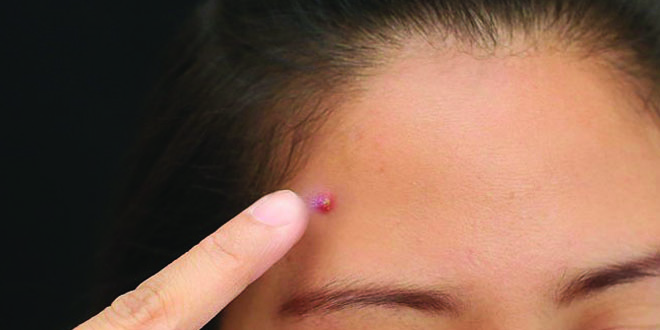
5 types of acne you should be careful about
Painful, pus filled, unsightly and unexplainable; acne seems like a problem sent from hell. Not only do doctors fail to understand the exact cause behind it, there’s also no guaranteed way to prevent it. Each individual presents with different kind of acne and causes behind. Whatever the cause might be, everyone wants it off their face and fast!
One of the ways dermatologist try to treat acne is by finding out what exactly they are dealing with. Once they have figured it out (which is after a few tests and experiments), they can write you a prescription that might give you the perfect skin.
Going right down to the cellular level, scientists and doctors have discovered what the skin is made of and its appendages. Different parts of the body have slight differences in the skin covering them according to their function. The skin on your face contains sebaceous glands led by hair follicles. The gland secretes sebum, which breaks through the surface of the skin via pores. The purpose behind this complicated process is nature’s way to keep your skin smooth, protected and hydrated.
The problem, however, arises when this process is interrupted or its control is disturbed. Hormonal imbalance is the major cause of excess sebum production. This then clogs the pores and some other ingredients join in to confirm what your clogged pore will turn into. These other ingredients can be dead skin cells on the surface, bacteria and make-up. This clogging eventually adds to blackheads, white-heads, pimples, cysts, papules or pustules.
BLACKHEADS
When dead skin cells and excess skin oil gets trapped into the pore and make their way towards the opening, they get oxidized as they are exposed to air and result in a blackhead. This oxidation reaction results in a black dot which is set deeper into the pore then it looks. This deep set nature of the blackheads makes it difficult to remove them. As per general belief, blackheads are not due to bacteria or general hygiene therefore topical antibiotics and keeping the face clean does not really help. Black heads need to be treated with a well formulated BHA product, pore strips and scrubbing. To treat the root cause, the pore functioning prescription-only medications can help such as products with retinol.
WHITE-HEADS (ALSO KNOWN AS MILIA)
These are small, white, hard bumps that are somewhat similar to pimples but without any redness, swelling or ongoing bacterial activity. They can either prove to be benign and might not show any development or may suddenly grow into a pimple. They often need to be physically removed. Doing it yourself can result in incomplete removal which results in a pimple for sure. Visit your dermatologist for physical removal of white heads as they are too stubborn to deal with yourself. However, like blackheads, BHA products can help with white heads too.
PAPULES
More commonly known as regular pimples, these are mild and not likely to form scars. They are small, pink to slightly red-colored bumps on the skin with little white fluids pushing to the surface. This happens when a blocked pore breaks; bacterial inflammation takes over and produces white fluid-caused pus. This is the easiest form of acne to deal with. Products containing salicylic acid and benzoyl peroxide are the best way to handle them. However, scrubbing a pimple directly should be avoided as it may be too hard for the collagen deprived skin around the pimple.
PUSTULES
When a regular pimple grows into a larger pimple, it is named a pustule. Large, engorged red bump with more white fluid than papule makes a pustule. Most youngsters face a combination of pustules and papules which requires both over-the-counter products (salicylic acid and benzoyl peroxide) and prescription-only products. The mechanism behind the formation of a pustule is same as papule but on a greater scale.
NODULES AND CYSTS
Cysts and nodules are the biggest, most excruciating and most troublesome kind of acne breakouts to handle. A cyst does not resemble a pimple every time; it can be only a big red swollen bump. They are embedded much deeper into the sebaceous gland and involves layers of the skin. If left untreated, the odds of scarring caused by these pimples are high. Scarring happens because the growth is so deep and large it harms the collagen structure of the skin around it.
This kind of acne cannot be treated by over-the-counter products and needs medical attention.

